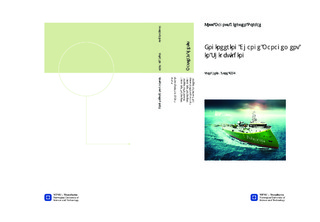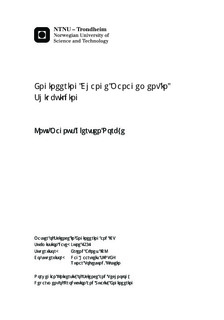| dc.description.abstract | In today’s global competitive market, it is getting increasingly more important to continuously improve by delivering high quality products at a faster rate and to a lower price, in order to stay competitive. In this context, companies have recently realised the significant advantages a proper engineering change management (ECM) process can yield in terms of time to market and reduced cost. Thus, there is an increased attention towards technology that can better cope with the current ECM problems, and thereby aid a company in getting the competitive edge compared to its competitors. However, since such technology selection is one of the most challenging decisions company management encounters, it is crucial to have a good understanding of the problem ahead and implications of the possible solutions. The overall purpose of this thesis is to develop a framework that will aid companies with ECM related technology selection. Prior research has already identified ECM as a critical process in new product develop and thereby crucial for a company’s competitiveness. Despite the importance, the previous research on ECM appears as scarce. Hence, the technology selection framework is a response to the increased awareness of the significant advantages a proper ECM process can yield, along with the inadequate attention ECM has received in academic research literature. The research presented in this thesis includes a review of literature on product lifecycle management (PLM) and ECM. The research identifies four core ECM problems, change propagation, knowledge management, collaboration, and information interpretation. Along with these problems, the research also identifies a wide variety of different solutions and approaches to cope with the problems. These findings are then consolidated into a framework providing a concise overview of the key characteristics and relationships among ECM problems and solutions. A study on Simens’ PLM system Teamcenter was also performed. This examination was performed in an ECM context, where the intention was to get a broader understanding of which ECM capabilities that are present in today’s information technology (IT) solutions. Through consolidating the findings from the Teamcenter examination and the findings from the literature study, a revised framework was developed. The last part of the research presents a case study of the Norwegian shipbuilding company Ulstein. The purpose of the case study was to thoroughly analyse Ulstein’s current ECM process by adapting the technology selection framework. The case study presents Ulstein’s current ECM process, followed by an extensive discussion of possible improvements. Based on this assessment, concluding remarks on how Ulstein should improve their current ECM process were made. The proposed framework makes it possible for a company to easily classify its own capabilities in relation to the core ECM problems. When adapted, the framework will provide an intuitive overview which enables the company to compare its own capabilities with other solutions available, aiding the process of adapting new technology and assessing its potential impact. | nb_NO |

